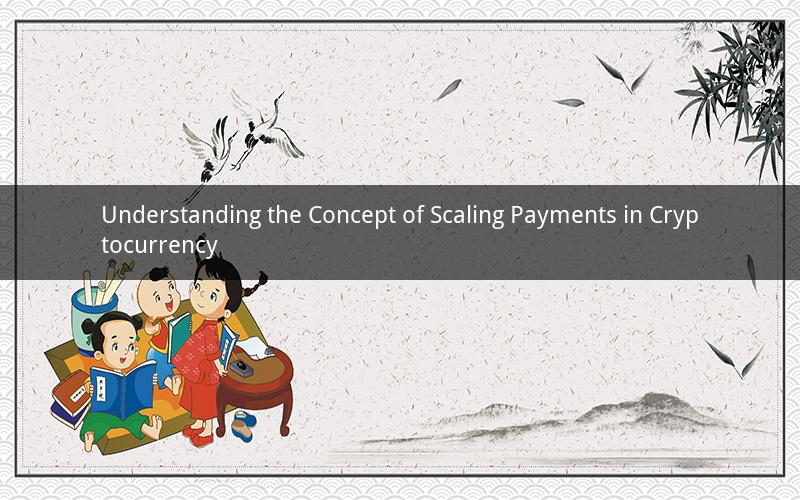
Introduction:
Cryptocurrency has revolutionized the financial world, offering a decentralized and secure method of transactions. However, one of the challenges faced by the cryptocurrency ecosystem is the scalability issue. In this article, we will delve into the concept of scaling payments in cryptocurrency, exploring its significance and the various methods employed to address this challenge.
What is Scaling Payments in Cryptocurrency?
Scaling payments in cryptocurrency refers to the ability of a blockchain network to handle a large number of transactions efficiently and securely. As the popularity of cryptocurrencies grows, the network must be able to accommodate a higher volume of transactions without compromising on speed, security, and decentralization.
The Importance of Scaling Payments
1. Enhanced User Experience:
Efficient scaling allows for faster transaction confirmation times, reducing the waiting period for users. This improved user experience encourages wider adoption of cryptocurrencies as a means of payment.
2. Increased Transaction Volume:
Scalability enables the network to handle a higher number of transactions simultaneously, preventing network congestion and reducing the risk of transaction fees skyrocketing.
3. Decentralization:
A scalable network ensures that the power is distributed among multiple participants, maintaining the decentralized nature of blockchain technology.
Methods for Scaling Payments in Cryptocurrency
1. Segregated Witness (SegWit):
SegWit is a protocol upgrade that allows for more efficient transaction handling by separating the witness data from the transaction data. This increases the block size limit and improves transaction throughput.
2. Layer 2 Solutions:
Layer 2 solutions operate on top of the existing blockchain network, providing off-chain transaction processing. Examples include the Lightning Network for Bitcoin and the Raiden Network for Ethereum. These solutions enable faster and cheaper transactions while maintaining the security of the underlying blockchain.
3. Sharding:
Sharding involves dividing the blockchain network into smaller, more manageable pieces called shards. Each shard processes a subset of transactions, reducing the overall load on the network and improving scalability.
4. Sidechains:
Sidechains are separate blockchains that operate alongside the main blockchain. They can handle transactions independently, allowing for faster and more scalable processing. Transactions between the main chain and sidechains can be settled quickly, ensuring seamless integration.
5. Plasma:
Plasma is a layer 2 scaling solution that allows for off-chain transactions to be executed within a child chain. This child chain is connected to the main blockchain, providing a secure and scalable platform for transactions.
Frequently Asked Questions (FAQs)
1. Q: What is the main advantage of SegWit over the traditional Bitcoin protocol?
A: SegWit increases the block size limit by separating witness data from transaction data, allowing for more efficient transaction handling and improved network throughput.
2. Q: How does the Lightning Network enable faster and cheaper transactions?
A: The Lightning Network operates off-chain, allowing for instant transactions between participants without the need to wait for confirmation on the main blockchain. This reduces transaction fees and confirmation times.
3. Q: Can sharding compromise the security of a blockchain network?
A: Sharding can potentially introduce security vulnerabilities if not implemented properly. However, with careful design and robust security measures, sharding can enhance scalability without compromising network security.
4. Q: What is the difference between a sidechain and a child chain?
A: A sidechain is a separate blockchain that operates alongside the main chain, while a child chain is a subset of the main blockchain that can handle transactions independently. Both solutions aim to improve scalability but differ in their architecture.
5. Q: Is Plasma considered a layer 1 or layer 2 scaling solution?
A: Plasma is a layer 2 scaling solution as it operates on top of the main blockchain, allowing for off-chain transaction processing. This enhances scalability while maintaining the security of the underlying network.
Conclusion:
Scaling payments in cryptocurrency is crucial for the growth and adoption of digital currencies. By implementing various scaling methods such as SegWit, layer 2 solutions, sharding, sidechains, and Plasma, the cryptocurrency ecosystem can overcome the scalability challenge and provide a seamless and efficient payment experience for users worldwide.